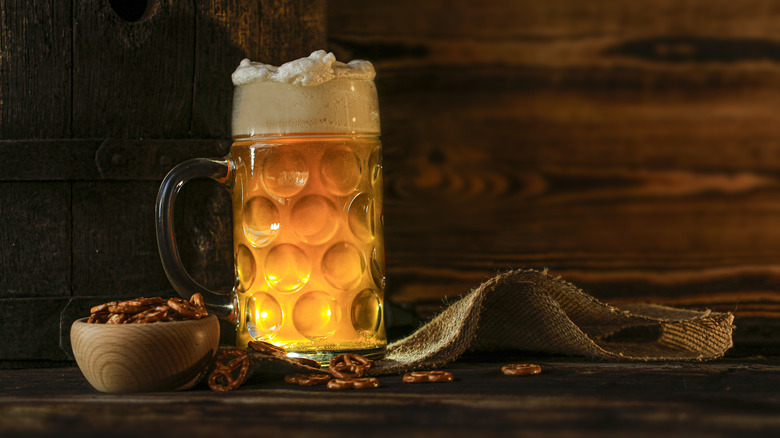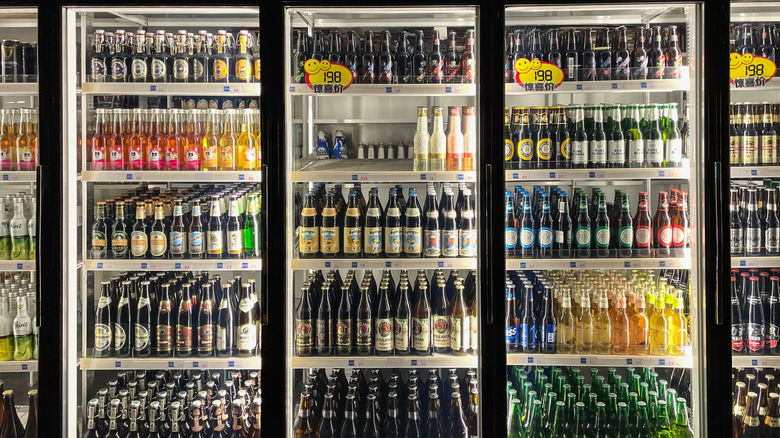Make Beer Storage Simple With The 3-30-300 Rule
What sounds better to you? An ice, cold frothy beer or a room temperature, flat brew? If you answered the former, you're not only good at answering obvious questions, but you're also reading the right article.
The best way to store beer and keep it fresh is to follow the 3-30-300 rule. The 3-30-300 rule holds that a beer stored at 90 degrees for three days will be as fresh as a beer stored for 30 days at 72 degrees. The same goes for beer stored at 38 degrees for 300 days, per the rule.
No matter what, beer that is stored away will eventually oxidize and essentially go bad. Beer can't technically be considered expired because pathogens can't survive in the brew, but the taste can get funky. Oxidation can leave the beer tasting like wet cardboard or give it a metallic flavor. The 3-30-300 rule shows you how to store beer to keep it as fresh as possible for as long as possible.
Other considerations for storing beer
When you've got a case of beer at home, the key to ensuring that every bottle you crack open is just as good as the previous one is to store the beer properly. Does that mean putting the beers in the refrigerator and just forgetting about them? Nope (and you should never put beer in the freezer, by the way).
In addition to following the 3-30-300 rule, it is key to pay attention to the date printed on the beer's packaging. Some beers might have a "bottled on" date or an actual expiration date printed on them depending on the type of beer and brewing company. These dates can help you store your beer for the ideal amount of time and at the correct temperature.
Different types of beer, whether bottles, cans, or growlers, might have some other tips for storage, but all beers should be refrigerated. Not refrigerating beer at all will actually shorten its lifespan, speeding up that oxidation process and creating odd, unintended flavors. Enjoying a few beers with friends can always lead to a fun night, but playing by proper beer storage rules will make sure you cheers with the freshest beer around.

